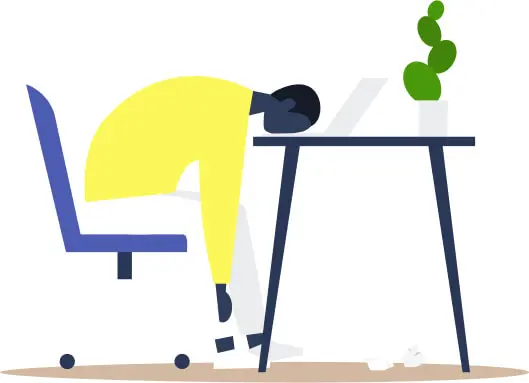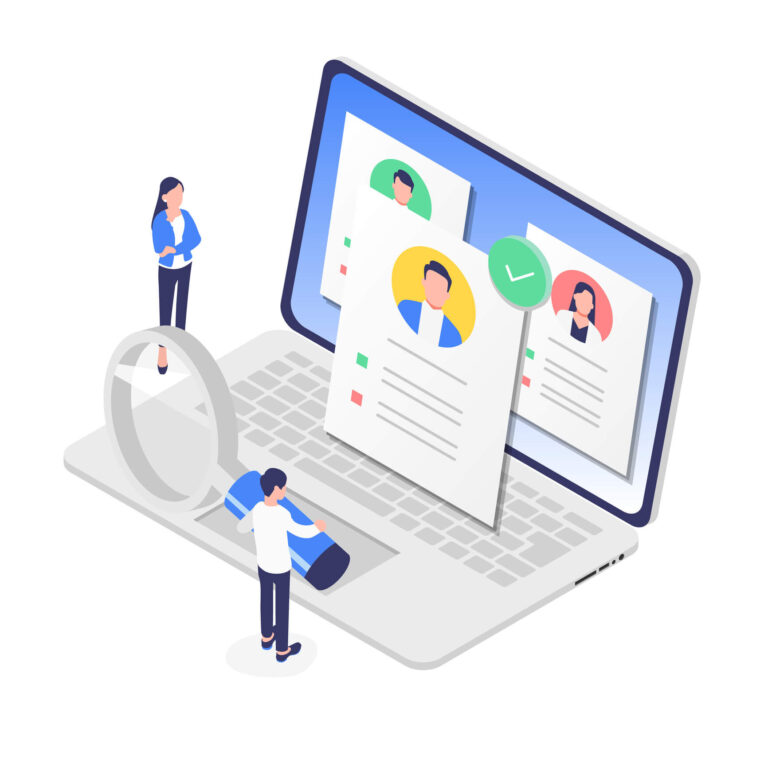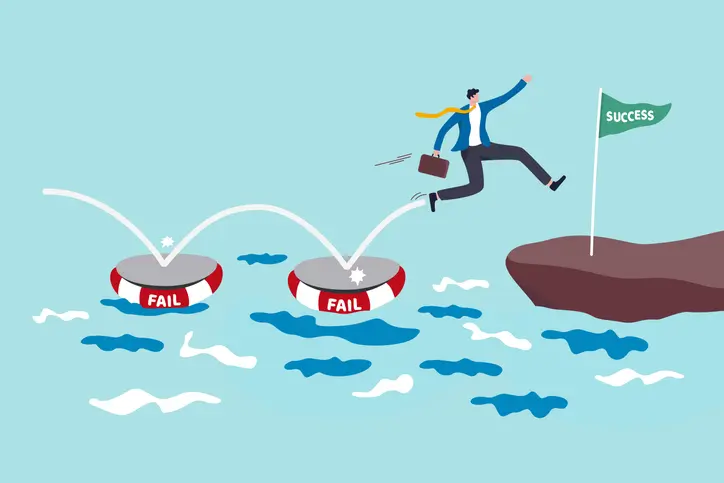
Thoughtful user experiences can positively impact customer retention for SaaS products
When it comes to customer retention strategies for SaaS, user experience (UX) plays a pivotal role. A well-designed UX can keep customers engaged, satisfied, and loyal. However, neglecting UX can lead to churn, even if your product is technically excellent.
And when we say neglecting UX, we mean areas you may not have realized affect the customer experience. These include the accessibility of your product, the ability for customers to access a product across devices, or even small friction points that add up to frustration. Think of frustration like a repellent for engagement. But that’s likely the opposite of what you want. You want something that attracts customers.
The good news is that by addressing common blockers, enhancing accessibility, and fostering delightful interactions, you can keep users engaged for the long haul. In this guide, we’ll share five UX best practices for improving customer retention in SaaS products.
Why UX matters for customer retention in SaaS
Imagine this:
You’ve built an innovative SaaS product. You invested heavily in onboarding, research, and development. You designed features you’re confident will solve your customers’ pain points and deliver real value. But as you watch the analytics roll in, you notice a troubling pattern. Users sign up, explore briefly, and then vanish… never to return.
Despite all the hard work, your product isn’t sticking. So, what’s going wrong?
Think of it like inviting a guest to your home. If the directions to your house are unclear or unnecessarily complicated, your guest might get frustrated before even arriving. Once they reach your door, if the lock mechanism is confusing, they may feel unwelcome. Inside, if the layout is chaotic, with obstacles in every pathway, they’re unlikely to feel comfortable staying.
The same principle applies to your SaaS product. If users encounter unclear navigation, inconsistent interactions, or unnecessary steps to accomplish their goals, they’ll likely disengage and look elsewhere for a solution.
What to do about roadblocks

In the context of customer retention strategies for SaaS, these “roadblocks” are friction points in your user journey. Friction points are anything that makes your product difficult to understand, cumbersome to use, or ineffective in delivering value. Frustration builds when users can’t quickly achieve what they came to your product to do, whether that’s onboarding, setting up a workflow, or accessing a key feature.
The harder it is for customers to navigate your product intuitively and seamlessly, the less likely they are to stick around. Remember, in a competitive SaaS landscape, users often have other options. Even minor annoyances can send them searching for a competitor with a more user-friendly interface.
The good news? Thoughtful UX design can eliminate these roadblocks. By focusing on clarity, consistency, and accessibility, you can create a user journey that feels intuitive, enjoyable, and productive. When users can easily accomplish their goals without friction, they’re far more likely to return, explore further, and ultimately become loyal advocates of your product. In short, optimizing UX isn’t just a nice-to-have — it’s a critical investment in customer retention strategies for SaaS.
So where do you start?
1. Streamline your onboarding process
Onboarding is a critical first step in any customer retention strategy for SaaS. It’s your chance to create a positive first impression and set the tone for the user’s journey. A poor onboarding experience can confuse and frustrate users, making them less likely to engage with your product.
Best practices for SaaS onboarding
Onboarding is one of the most crucial moments in the user journey. It’s where users form their first impressions and decide whether your product is worth their time. An effective onboarding process sets the stage for successful adoption, engagement, and retention. Here’s how you can optimize it:
- Limit data collection
The temptation to gather as much user information as possible during sign-up can backfire. Asking for too much information too soon can overwhelm or frustrate users. Instead, focus on collecting only what’s absolutely necessary for them to start using your product. For example, rather than requiring a detailed profile upfront, consider allowing users to explore the platform and gradually ask for more data as they engage with specific features. This approach reduces friction and builds trust. - Use engaging visuals
Visuals are a powerful tool to capture attention and simplify complex concepts. Incorporate animations, videos, or dynamic illustrations to guide users through the onboarding process. For instance, a brief animated video can explain how to use your core features in under a minute, while a visual progress bar shows users how close they are to completing setup. Engaging visuals make the process feel less like a chore and more like an interactive experience. - Provide contextual guidance
Users should never feel lost while exploring your product. Contextual guidance, such as tooltips, pop-ups, or highlights, helps users understand what to do next without overwhelming them with lengthy tutorials. For example, when users hover over a button or navigate to a new section, you can display a brief explanation of what it does and why it’s useful. This just-in-time guidance ensures users learn as they go, reducing cognitive load and frustration. - Reward milestones
Gamification can make onboarding more enjoyable and encourage users to complete the process. By introducing milestones and rewards, you give users a sense of accomplishment as they progress. For example, you could use a progress bar that tracks setup completion and reward users with a free trial extension, access to premium features, or even a simple congratulatory message when they finish. These rewards motivate users to continue exploring your platform.
For example, let’s think about a project management SaaS platform that offers a free trial of its premium features as a reward for completing onboarding. As users progress through the onboarding steps—creating a project, inviting team members, and setting up their first task list—they’re shown a progress bar with clear milestones. Upon completing these steps, they’re notified: “Great job! You’ve unlocked a 14-day trial of our premium analytics dashboard.”
This reward not only provides a sense of achievement but also incentivizes users to engage further with the product by exploring premium features. The trial exposes them to added value they might not have considered, increasing the likelihood of converting them into paying customers. Additionally, the milestone-based progress bar ensures that onboarding feels manageable and structured, reducing drop-off rates during the process.
Dropbox’s onboarding success
By focusing on a clean and intuitive onboarding experience, Dropbox increased user engagement and retention. Dropbox’s onboarding process is designed to be simple yet impactful, guiding users step-by-step without overwhelming them. New users are introduced to the platform through an interactive tutorial that highlights key features, such as uploading files, sharing folders, and syncing devices.
For example, Dropbox gamifies the onboarding journey by offering rewards for completing tasks like installing the desktop app or sharing a folder with a friend. Each completed task unlocks bonus storage space, creating an immediate sense of value while teaching users how to maximize the platform’s functionality. The progress bar visualizes these milestones, encouraging users to fully engage with the setup process.
This approach not only familiarizes users with Dropbox’s capabilities but also encourages them to explore the product further. By building confidence in using the platform and demonstrating its value early on, Dropbox effectively reduces the likelihood of churn while fostering long-term loyalty.
2. Ensure consistent and simple design
Consistency breeds familiarity, which is essential for customer retention in SaaS. Users should not have to relearn navigation patterns or interpret unclear iconography every time they log in.
Tips for consistency in SaaS UX design
Consistency in design fosters familiarity, which is critical for keeping users engaged with your SaaS product. A predictable and cohesive user experience ensures customers can navigate your platform effortlessly, making them more likely to return.
- Adopt a design system
A design system is more than just a collection of components; it’s a framework that unifies your product’s look and feel. Standardizing elements like buttons, forms, menus, and typography across your platform creates a seamless experience. For example, if a “Submit” button always looks and functions the same way, users quickly learn to trust its purpose without hesitation. Beyond aesthetics, a design system improves efficiency for your team, allowing developers and designers to maintain consistency as your product evolves. - Focus on clarity
Clarity eliminates confusion and empowers users to achieve their goals with ease. Use clear, descriptive labels for buttons, navigation items, and tooltips. Avoid jargon or ambiguous terms—opt for language that users can instantly understand. For instance, instead of labeling a button “Process,” clarify its purpose with “Submit Payment” or “Complete Order.” Pair this with layouts that prioritize simplicity, ensuring users can focus on what matters most without unnecessary distractions. - Chunk content effectively
When presenting information, break it into smaller, digestible sections. Chunking content not only enhances readability but also helps users process and retain information more effectively. For example, instead of overwhelming users with a single, lengthy onboarding checklist, split tasks into smaller groups with headers like “Getting Started,” “Adding Your Team,” and “Customizing Your Workspace.” This approach keeps users from feeling overwhelmed and encourages steady progress through your platform.
Consistent design reinforces user confidence, making it easier for customers to accomplish their goals. This simplicity is at the heart of effective customer retention strategies for SaaS.
How Slack engages through consistent design
Slack’s success in retaining users is rooted in its consistent design system and delightful interactions, which create a seamless and enjoyable user experience across platforms. The company’s design system, guided by a clear style guide and component library, ensures that users experience familiarity regardless of whether they’re accessing Slack on desktop, mobile, or web.
For example, Slack uses a consistent visual language with clean typography, recognizable icons, and a clear hierarchy of information. Navigation menus and buttons maintain the same placement and behavior across devices, reducing the cognitive load for users switching between platforms. Slack also leverages color strategically, with custom workspace themes that allow users to personalize their interface without disrupting core usability.
Beyond consistency, Slack incorporates delightful interactions to keep users engaged. For example, playful micro-interactions like custom emoji reactions and subtle animations when sending messages add personality to the platform. Slack also humanizes the experience by including humorous loading messages and friendly error notifications, creating an emotional connection with users.
This combination of a robust design system and thoughtful, delightful touches helps Slack retain users by making the platform intuitive, enjoyable, and reliable—key components of effective customer retention strategies for SaaS.
Avoid major blunders
Download our free checklist to help you keep track of what items to review to improve the user experience of your website.

3. Prioritize accessibility
Accessibility is not just a compliance checkbox. It’s an essential component of great UX. Inclusive design ensures that your product is usable by the broadest possible audience, including those with disabilities.
Accessibility practices for SaaS platforms
Accessibility is a cornerstone of good UX, ensuring your SaaS product can be used and enjoyed by everyone, regardless of ability. By integrating inclusive design practices, you not only broaden your customer base but also create a smoother experience for all users. Consider these key practices:
- Support larger text options
Offer users the ability to adjust font sizes to meet their individual needs. Many users with visual impairments struggle with small text, so providing a scalable interface or text resizing options can significantly enhance usability. Implementing responsive typography—where text size adapts dynamically based on screen resolution and user settings—can also ensure a seamless experience across devices. - Provide alternatives for visuals
Visual content like images and videos should always have accessible alternatives. Include alt text for all images to describe their content and function, ensuring that screen readers can interpret them for visually impaired users. Similarly, provide captions or transcripts for video content, enabling users with hearing impairments to access the information. For example, a SaaS training module can include subtitles for instructional videos, making the content accessible to a wider audience. - Choose colorblind-friendly palettes
Roughly 8 percent of men and 0.5 percent of women worldwide have some form of color blindness. To accommodate these users, avoid relying solely on color to convey meaning. For instance, if you’re using red and green to indicate errors and successes, pair those colors with text labels or icons (e.g., a checkmark for success and an “X” for errors). Tools like color contrast analyzers can help ensure your design meets WCAG standards for color contrast ratios. - Incorporate keyboard navigation
Ensure that all interactive elements—buttons, links, forms, and dropdown menus—can be navigated using only a keyboard. Many users with mobility impairments rely on keyboard navigation or assistive technologies to interact with digital interfaces. Test your platform’s tab order, focus states, and shortcut keys to verify they work intuitively and consistently. - Offer flexible interaction modes
Not all users interact with your platform the same way. Some may use a mouse, others may rely on touch gestures, and still others may use voice commands or screen readers. Design your product to support multiple interaction modes, allowing users to choose what works best for them. For instance, provide visible focus indicators for keyboard users and voice-enabled commands for hands-free interaction. - Regularly audit for accessibility
Accessibility isn’t a one-time task; it’s an ongoing commitment. Perform regular audits of your SaaS platform against the latest Web Content Accessibility Guidelines (WCAG). Use tools like Lighthouse or Axe to identify issues, and involve users with disabilities in your testing process to gain real-world insights. This proactive approach ensures your product remains inclusive as it evolves.
Regularly auditing your product against Web Content Accessibility Guidelines (WCAG) can help you identify areas for improvement. By prioritizing accessibility, you not only retain customers with diverse needs but also improve usability for everyone.
4. Regularly test and iterate
Testing is the backbone of successful customer retention strategies for SaaS. Regular user testing helps you identify pain points and address them before they lead to churn.
How to Incorporate Testing:
- Conduct usability tests: Observe users interacting with your product to uncover frustrations.
- Analyze user feedback: Actively seek input through surveys, reviews, or support tickets.
- Leverage analytics: Track engagement metrics to identify drop-off points in user flows.
Iteration based on real user insights demonstrates your commitment to meeting customer needs. For instance, a SaaS company that rolls out updates based on user feedback fosters trust and loyalty. Additionally, incorporating A/B testing can help determine which design elements resonate most with users, enabling data-driven decisions. Testing doesn’t just improve the product—it also signals to your customers that you’re listening to their needs and valuing their experience. Over time, this approach creates a cycle of continuous improvement, reinforcing user satisfaction and reducing churn.
How HubSpot leverages testing and iteration
By regularly testing and iterating, HubSpot makes sure that its platform evolves with user needs, and this fosters long-term engagement and retention. HubSpot’s iterative approach begins with extensive user research, including usability testing, surveys, and interviews, to understand pain points and opportunities for improvement. The company uses this data to prioritize updates that directly address user concerns, ensuring that each iteration delivers meaningful value.
For example, HubSpot’s CRM underwent a significant overhaul based on user feedback indicating frustration with overly complex workflows. The redesign streamlined navigation, introduced customizable dashboards, and improved task automation features. These changes were not implemented all at once but rolled out incrementally, allowing HubSpot to gather additional feedback and refine updates in real time.
HubSpot also employs A/B testing to optimize key features and design elements. For example, when testing improvements to its email marketing tools, HubSpot experimented with different layouts and feature placements, measuring how each variation impacted user engagement and efficiency. The version with the highest positive impact became the standard, ensuring that updates were both data-driven and user-centric.
This iterative process demonstrates HubSpot’s commitment to its customers, reinforcing trust and loyalty. By continuously aligning its product with evolving user needs, HubSpot not only reduces churn but also solidifies its reputation as a SaaS leader that listens and adapts.
5. Design for delight
Delightful experiences not only retain customers but also turn them into advocates for your brand. Small, thoughtful touches can make a big difference in how users perceive your product.
Ideas for creating delight:
- Celebrate milestones: Send personalized congratulatory messages when users achieve goals.
- Incorporate micro-interactions: Use subtle animations to provide feedback on user actions.
- Offer unexpected value: Surprise users with helpful tips or resources tailored to their needs.
When delight becomes part of your UX, you differentiate your SaaS product from competitors, enhancing retention.
How Asana added delight
Asana, a project management platform, is a great example of how B2B SaaS products can incorporate delight to retain users and foster loyalty. While Asana’s primary goal is to help teams manage tasks and collaborate efficiently, it introduces playful and thoughtful design elements that make the experience enjoyable and memorable.
- Celebratory animations:
One of Asana’s standout features is its celebratory animations that appear when users complete tasks. For example, after marking a task as complete, users might see a colorful unicorn or other whimsical creature fly across the screen. This small, unexpected interaction adds a moment of joy to an otherwise routine action, making users feel accomplished and motivated to tackle their next task. - Personalized workspaces:
Asana allows users to customize their workspace with unique backgrounds, project colors, and team names. These personal touches help users feel a sense of ownership and connection with the tool, which is especially important for team-wide adoption. - Goal progress visualizations:
Asana’s dashboards include progress bars and visual milestones for projects, providing clear feedback on team achievements. For example, reaching 50 percent of a project goal triggers a congratulatory notification or highlights the next milestone. These visual cues make progress tangible and celebrate team achievements, encouraging collaboration and sustained engagement. - Easter eggs and gamification:
Asana includes delightful “Easter eggs” that users can discover over time, such as keyboard shortcuts that trigger playful animations. For instance, typing “Tab + B” brings up a message that reads, “Tabby loves you,” with a heart icon, adding a moment of lighthearted fun during work. - Guided onboarding with humor:
Asana’s onboarding process includes helpful tooltips and playful language, making the experience approachable even for first-time users. Instead of dry, technical instructions, Asana’s guides are written in a conversational tone that puts users at ease.
These small but impactful design choices help Asana stand out in the competitive B2B SaaS market. They create a sense of delight that strengthens the emotional connection between users and the platform, encouraging both retention and advocacy.
Wrapping up: Retain more customers through UX best practices
Improving customer retention is a journey, not a destination. By focusing on these five UX best practices, you can create a product experience that keeps users engaged and loyal.
To recap:
- Streamline your onboarding process.
- Maintain consistent and simple design.
- Prioritize accessibility for a broader audience.
- Test and iterate regularly to meet evolving user needs.
- Design for delight to create memorable interactions.
When applied thoughtfully, these customer retention strategies for SaaS can help you build stronger relationships with your audience, reduce churn, and foster long-term loyalty.
Need help optimizing your UX for better retention? Contact Standard Beagle for a free consultation!











